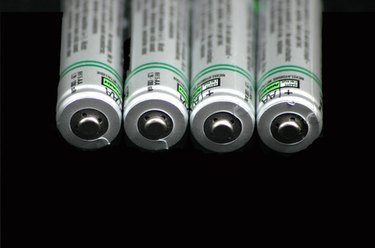
Lithium-ion batteries are long-lasting, rechargeable and used in a variety of devices--including laptop computers and personal digital assistants (PDAs)--where disposable batteries would not be feasible. The batteries' cells are replenished in a special charger designed to protect the cells from overcharging. When a lithium-ion battery is allowed to totally discharge for a long period of time or the battery is losing its charge quickly, the lithium-ion battery needs resetting. Once reset, the battery is restored to its full capacity.
Step 1
Use the device containing the lithium-ion battery until the battery is completely discharged.
Video of the Day
Step 2
Plug the device's power cord into an electrical outlet. Plug the other end of the device's power cord into the device.
Step 3
Remove the lithium-ion battery from the device if the device has an external lithium-ion battery charger. Match up the metal contacts on the side of the lithium-ion battery with the metal contacts in the charger.
Step 4
Place the lithium-ion battery in the charger. Plug in the charger's power cord into an electrical outlet.
Step 5
Look for the "Charge" or "Power" light to illuminate on the device or battery charger.
Step 6
Let the lithium-ion battery fully charge until the "Charge" or "Power" light turns off.
Video of the Day